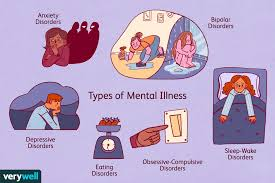A charge nurse overhears another nurse talking with a client who has schizophrenia. Suddenly the client yells, "I am the devil! I am God! Open the gate for me!" Which of the following replies by the nurse requires intervention?
"There is no gate for me to open."
"I don't understand. Can you tell me what that means?"
"Are you saying that you are both good and bad?"
"It sounds frightening to feel like both God and the devil at the same time."
The Correct Answer is A
Choice A Reason:
This response may invalidate the client's experience and can be perceived as dismissive of the client's delusional thoughts. It does not acknowledge the client's current reality or provide any therapeutic communication. An intervention is required to guide the nurse in offering a more empathetic and validating response.
Choice B Reason:
Asking the client to clarify what they mean encourages communication and shows a willingness to understand the client's perspective. It is a therapeutic approach that can help the nurse gain insight into the client's thoughts and provide appropriate support.
Choice C Reason:
This response could potentially validate the client's delusional thinking by engaging in the content of the delusion. It might lead to further discussion about the delusion rather than redirecting the client to reality, which could be counterproductive.
Choice D Reason:
Expressing empathy by acknowledging that the client's feelings must be frightening is a therapeutic response. It validates the client's emotions without confirming the delusional content and can help the client feel understood and supported.
Nursing Test Bank
Naxlex Comprehensive Predictor Exams
Related Questions
Correct Answer is C
Explanation
Choice A Reason:
Universality refers to the realization among group members that they are not alone in their experiences or feelings. While the interaction does show a shared experience, the primary factor demonstrated here is not just the commonality of experience but the encouragement and hope it provides.
Choice B Reason:
Imitative Behavior involves group members learning from each other by observing and copying behaviors. In this scenario, while the member who has been sober for 7 years may serve as a role model, the key element in this interaction is the hope conveyed through sharing personal success.
Choice C Reason:
Instillation of Hope is the encouragement that recovery is possible. The member's statement about overcoming multiple relapses and achieving long-term sobriety serves as a powerful testament to the possibility of recovery, thus instilling hope in others.
Choice D Reason:
Altruism is the unselfish concern for the welfare of others, which can be a byproduct of group therapy as members support each other. However, the primary factor at play in this scenario is the provision of hope rather than the act of giving support.
Correct Answer is A
Explanation
Choice A Reason:
Supporting the client's wish to refuse prescribed medications is a direct demonstration of respecting the client's autonomy. Autonomy in nursing is the right to self-determination, where patients are provided with adequate information to make their own decisions based on their beliefs and values. By supporting the client's decision, the nurse acknowledges the client's capacity to make informed choices about their own health care, even if the choice is different from what the medical team suggests.
Choice B Reason:
Ensuring that the client understands expectations for participation is more about informed consent and education rather than autonomy. While it is related to autonomy, it does not directly demonstrate the ethical concept since it does not involve a decision made by the client.
Choice C Reason:
Explaining unit rules and policies about unacceptable behaviors is part of the education process and setting boundaries within the healthcare environment. This action is necessary for all clients but does not specifically address the client's autonomy in making personal health decisions.
Choice D Reason:
Encouraging client feedback about satisfaction with the facility experience is a way to involve clients in the evaluation process of the facility's services. While this can be seen as respecting the client's opinions, it is not a direct action of supporting the client's autonomous decisions regarding their treatment plan

Whether you are a student looking to ace your exams or a practicing nurse seeking to enhance your expertise , our nursing education contents will empower you with the confidence and competence to make a difference in the lives of patients and become a respected leader in the healthcare field.
Visit Naxlex, invest in your future and unlock endless possibilities with our unparalleled nursing education contents today
Report Wrong Answer on the Current Question
Do you disagree with the answer? If yes, what is your expected answer? Explain.
Kindly be descriptive with the issue you are facing.
